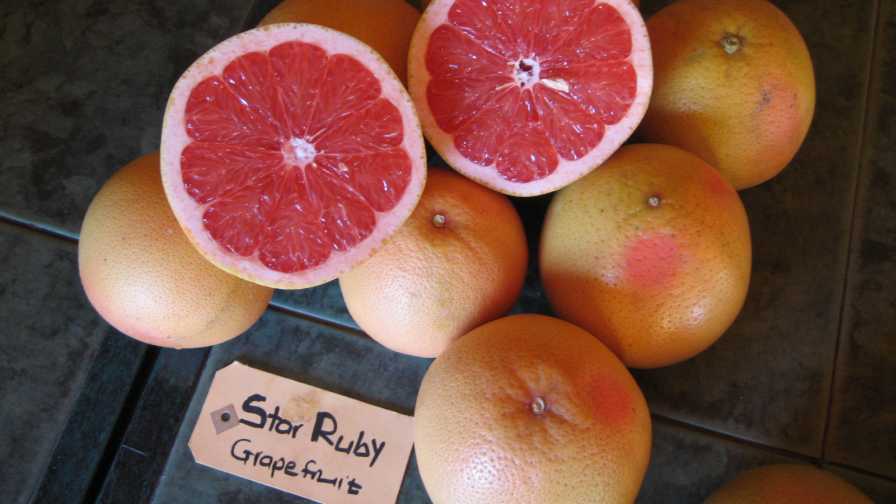Florida’s unique climate has long produced some of the world’s best quality grapefruit. Florida grapefruit are considered a premier offering, popular throughout the world for superior taste and eating quality. Perhaps more than any other citrus, grapefruit benefits from Florida’s heat, humidity, and subtropical rainfall. It’s right at home here. Fred Neil suggested in his song “Everybody’s Talkin’” that he would be “Going where the weather suits my clothes.” So describes the contented life of a Florida grapefruit tree.
And Then Came HLB
The impact of HLB on Florida’s grapefruit segment doesn’t require discussion or elaboration. Breeding teams are hard at work to develop more tolerant grapefruit. Progress has been slow (breeding new grapefruit and grapefruit-like selections is a difficult process), but we are confident that we will get there. Until then grapefruit growers are interested in singling out those varieties that seem to perform better than others. In the eyes of many, ‘Star Ruby’ grapefruit seems to have an edge on the others. It’s not great, and it’s not the long-term answer, but it does appear to perform better than average in an HLB endemic environment. ‘Star Ruby’ can sometimes produce smaller-than-desirable fruit size and it is known to be sensitive
to herbicides. Despite these issues, it is the red grapefruit of choice for many of the growers who are committed to Florida grapefruit production.
History Lesson
Dr. Richard Hensz produced the ‘Star Ruby’ grapefruit from ‘Hudson’ in Weslaco, TX and released it in 1970. In 1972, seeds were supplied to Dr. Anton Hough in South Africa. Budwood from these nucellar seedlings were budded onto ‘Troyer’ and ‘Rough Lemon’ liners and planted in 1975. A mother block was established for horticultural and virological evaluations, with the first fruit available for evaluation in 1979. This planting ultimately resulted in the selection upon which the South African ‘Star Ruby’ industry is based. Because the selection was nucellar, it may differ somewhat from the Texas ‘Star Ruby’.
The South African ‘Star Ruby’ produces a bushy tree and exhibits a compact growth habit. The fruit are virtually seedless with acceptable peel thickness, high juice content, and good internal color and quality. Many who have observed the South African ‘Star Ruby’ believe it to be superior to the original line grown in Florida. It is thought to produce larger fruit sizes and have better internal quality. Because all ‘Star Ruby’ tend to produce fruit inside the canopy, and much of the early fruit is heavy to the skirt, internal pruning and tree skirting require careful planning and execution.
Considering that ‘Star Ruby’ is the grapefruit of choice for many Florida growers, importation of a potentially improved Star Ruby could be of benefit. New Varieties Development & Management Corp. (NVDMC) is in the process of importing budwood of the South African ‘Star Ruby’ grapefruit.
Based on the budwood source, it appears that it will be eligible for an expedited entry protocol. NVDMC will work with citrus nurseries to accelerate budwood increase and to make trees available for trial and/or commercial planting at the earliest possible time.
The details of entry were being worked out as this article was under development. Propagation fees are not yet known, but if such fees are imposed, they will be minimal. Should the South African ‘Star Ruby’ prove to be superior to the Ruby line presently grown in Florida, it will not represent the ultimate solution for Florida growers, but it may be another incremental improvement that can help our industry in the near-term. It should also be noted that no information is available about the performance of South African ‘Star Ruby’ grapefruit with HLB. It is hoped that it will be at least as good as the current ‘Star Ruby’.
More information on availability will be provided in future articles. It will take some time to clear quarantine and increase budwood, but any positive advancement in the realm of grapefruit is welcomed.
Special thanks to BioGold North America and Dr. Graham Barry for their contributions to this article.










